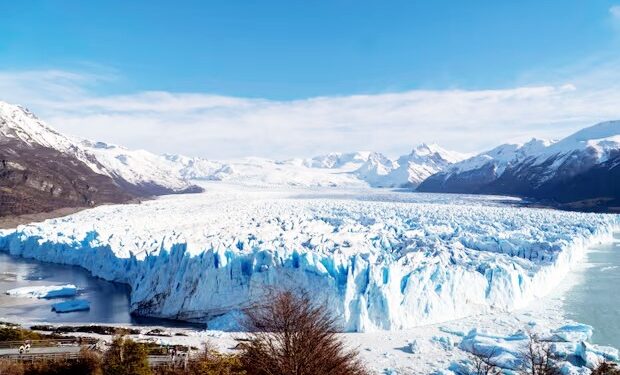Patagonia’s glaciers are now melting at such a rapid and persistent rate that scientists believe many could disappear entirely within the next two centuries, marking a critical loss for South America’s ecosystems, water security and climate stability.
Relentless ice loss documented
Glaciologists have confirmed that Patagonia’s ice fields — already diminished by more than 1,300 gigatonnes since the 1940s — are now in a state of irreversible retreat. The rate of annual ice loss has more than doubled in the past two decades, reaching approximately 24 gigatonnes per year. Researchers attribute this acceleration not to reduced snowfall but to shifting atmospheric circulation patterns that are warming the region disproportionately.
Changing winds fuel the collapse
A major study published in Nature Communications links the intensified melting to the poleward movement of subtropical high-pressure systems. These systems are now bringing warmer and drier air across the Andes, particularly at altitudes where glaciers were once more stable. As the protective firn layer — the compressed snow that insulates glaciers — thins away, the darker bare ice beneath absorbs more heat, hastening the melt and creating a self-reinforcing cycle.
Local hazards are rising
Beyond long-term environmental threats, the decline is also triggering immediate dangers. Destabilised glacier fronts are contributing to a rise in sudden icefalls, glacial lake outburst floods, and mudslides. In Chile, where many glaciers sit near active volcanoes, the combination of seismic activity and thawing ice is adding to the risk of deadly incidents for communities downstream.
Impacts on water and life
Patagonian glaciers serve as vital freshwater reserves for agriculture, energy, and biodiversity across Argentina and Chile. Their continued retreat threatens rural water supplies, hydroelectric output and natural habitats already stressed by erratic weather patterns. In some Andean regions, water shortages and seasonal droughts are becoming more frequent as glacial input declines.
A vanishing world
If current trends persist, many of Patagonia’s glaciers could vanish entirely within 200 to 250 years. Scientists warn that the region has passed a critical threshold, where even drastic global emissions cuts may not be enough to reverse the trajectory. However, they stress that mitigation efforts are still essential to slow the pace of change and protect what remains.
Patagonia’s disappearing ice is more than a local concern — it is a powerful indicator of a changing global climate and a stark warning of the cascading risks faced by glacier-dependent regions worldwide.
REFH – Newshub, 13 July 2025










Recent Comments